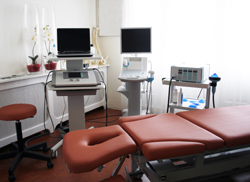Virtual games as rehabilitation in rural areas
The number of patients needing rehabilitation (including long-term therapy) has increased in recent years, but available resources have unfortunately diminished. If therapy is not adequate, be it because of the lack of its duration or lack of appropriate methodologies, this can lead to permanent disabilities in otherwise reversible conditions. For those who live in remote rural locations or those living in depressed urban areas, access to appropriate rehabilitation methods is often not possible. In many of these instances there are no clinics in the vicinity of the patient's home. The TELEDOC project aimed to address this problem by developing a complete system for telerehabilitation making use of virtual reality techniques. It creates an environment in which various training functions such as intensity levels, can be manipulated and enhanced. Other advantages of using virtual reality in the rehabilitation process include the ability to make training engaging, which is important for patient motivation. Furthermore, sensor technology can be adapted so that it can be used to quantify progress made by the patient, especially when assessing motor control improvement. The TELEDOC project designed a fully operative system demonstrator for this purpose. It includes a haptic interface developed for upper limb rehabilitation. It is formed by two joysticks or motion systems: a spherical system designed for the wrist and an X-Y table designed for elbow and shoulder. As part of the project, ten different videogames were developed, of which three were chosen to be integrated into the rehabilitation device. These were entitled Ping-pong, Labyrinth and Fisherman. A short introductory video was also produced to explain how to use the system. The design and research team found that because the target population are from rural areas, the simple videogames were the most effective for the rehabilitation process.







